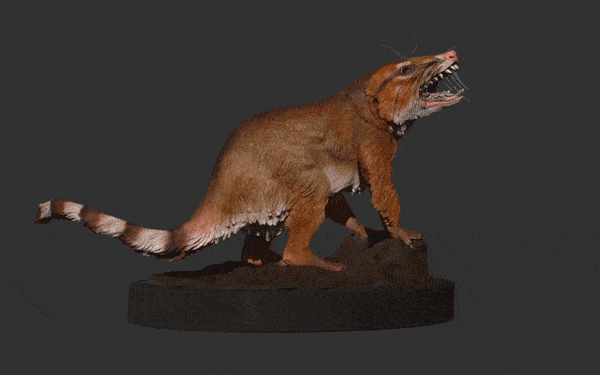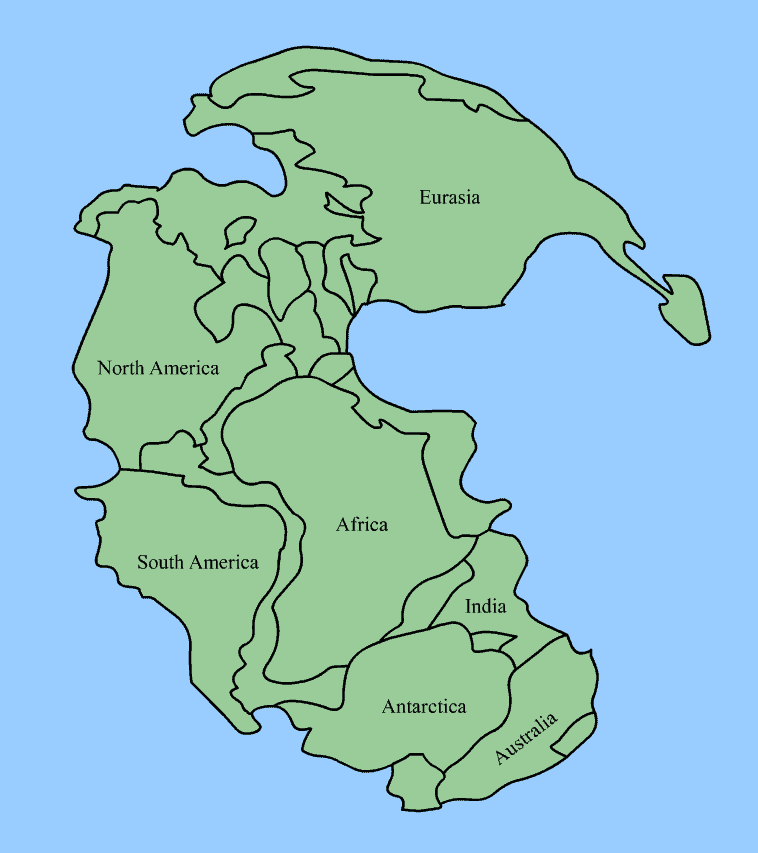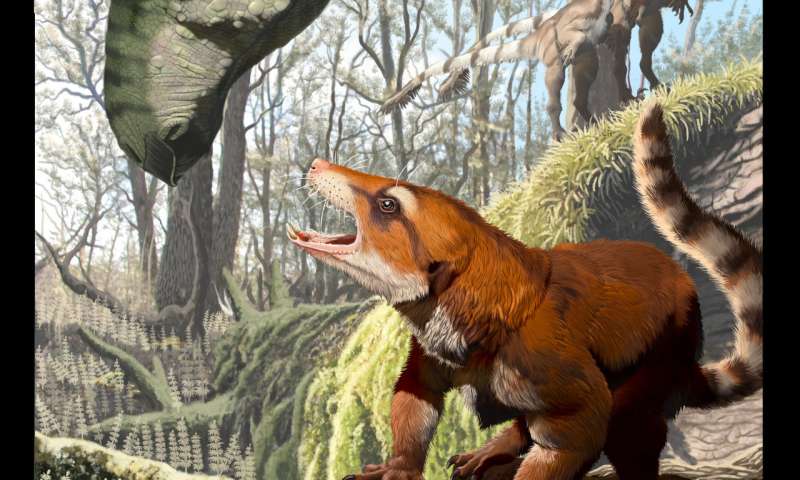A 130-million-year-old fossilized skull found in Utah is shaping up to be a groundbreaking discovery. Not only does it show how reptile-like mammals bridged the transition between the two groups but it also shows that Pangaea might have split up a bit slower than we thought.

Some 300 million years ago, a group called the synapsids started splitting from the reptilian and avian lineages. Synapsids are important as they include mammals, as well as their extinct relatives. The Permian-Triassic extinction event, which took place about 252 million years ago, likely created the necessary niches for other creatures to emerge, and synapsids took advantage of this. The first true mammals emerged 225 million years ago, as nocturnal insect-eating creatures. At this point, the entire landmass of Earth was clumped together into a supercontinent we now call Pangaea.
Fast forward to 130 million years ago, you have the creature you see above. Mammals were still in their early stages of evolution, but they were already starting to disperse. The new fossil finding allows researchers to better understand how this group of animal evolved and spread through Pangaea.
“Based on the unlikely discovery of this near-complete fossil cranium, we now recognize a new, cosmopolitan group of early mammal relatives,” said Adam Huttenlocker, lead author of the study and assistant professor of clinical integrative anatomical sciences at the Keck School of Medicine of USC.

Using high-resolution computed tomography (CT) scans, the researchers calculated that the creature weighed up to 2.5 pounds (1.1 kg) and was probably the size of a small hare. That might seem like a small creature, but for its contemporaries, it was probably a giant. The fossil shows that the creature had large olfactory bulbs, which suggests that it had a keen sense of smell. However, its eye sockets were tiny, so it likely had poor vision. Its teeth resembled those of fruit-eating bats and could nip, shear and crush. It might have incorporated plants into its diet, but this is not clear. Its brain was also fairly small. These characteristics suggest that the animal was probably a nocturne creature, using its sense of smell to sniff out food.

But most remarkably, the creature shows that at the time, mammals were already a diverse group and occupied numerous ecological niches.
“For a long time, we thought early mammals from the Cretaceous (145 to 66 million years ago) were anatomically similar and not ecologically diverse,” Huttenlocker said. “This finding by our team and others reinforce that, even before the rise of modern mammals, ancient relatives of mammals were exploring specialty niches: insectivores, herbivores, carnivores, swimmers, gliders. Basically, they were occupying a variety of niches that we see them occupy today.”
Paleontologists were also able to derive another important piece of information from the fossil. Remember how we said the entire landmass at the time was concentrated into a supercontinent? Well at one point, that continent split up, and the fossil might show that the split occurred later than it is generally thought.
The creature belongs within a group called Haramiyida, an extinct branch of mammal ancestors. Most of the Jurassic and Cretaceous fossils of Haramiyidans are from the Triassic and Jurassic of Europe, Greenland and Asia. But its particular subgroup was only known through fossils in northern Africa. So this means that during this creature’s lifetime, North American and Africa were still corrected — in other words, Pangaea was still together.
“But it’s not just this group of haramiyidans,” Huttenlocker said. The connection we discovered mirrors others recognized as recently as this year based on similar Cretaceous dinosaur fossils found in Africa and Europe.
Journal Reference: Late-surviving stem mammal links the lowermost Cretaceous of North America and Gondwana, Nature (2018). DOI: 10.1038/s41586-018-0126-y , www.nature.com/articles/s41586-018-0126-y.


